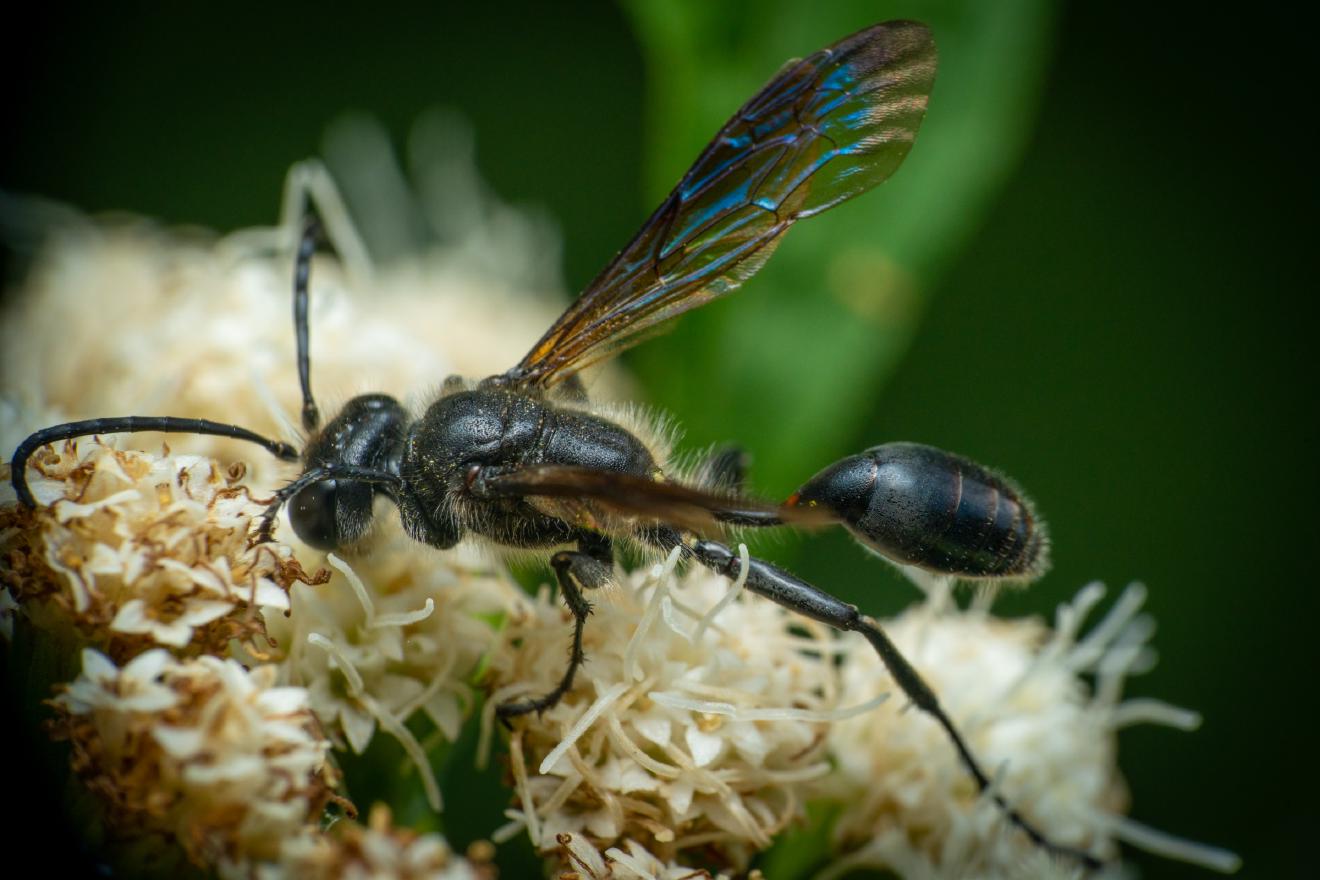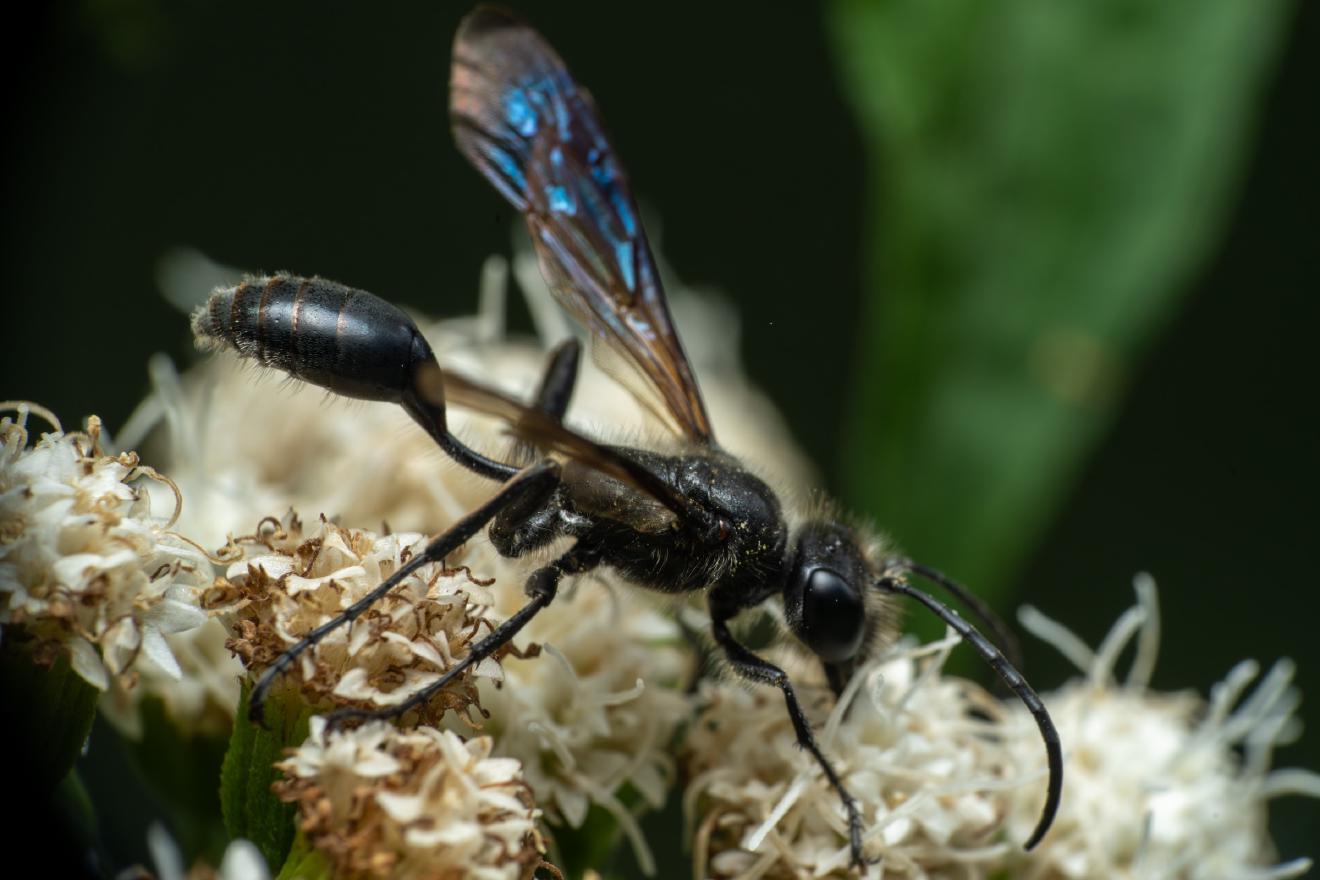Mexican Grass-carrying Wasp
Lat. “Isodontia mexicana“
species
of family
“Thread-waisted Wasps“
1 species
The grass-carrying wasp Isodontia mexicana (Saussure) exhibits interesting behaviors related to sex allocation, nest construction, and prey selection. Females of this species exhibit facultative sex allocation, meaning they can adjust the sex ratio of their offspring depending on certain factors. The wasps construct nests from grass stems, lining them with glandular secretions for protection against pathogens. They also provision their nests with paralyzed insects as food for their developing offspring. The effects of brood parasitism on Isodontia mexicana have been studied, revealing that it can have sublethal effects on the wasps’ reproduction and survival. In some regions, the species has been introduced adventitiously, like in Piedmont, Italy.
References
Kevin M. O’Neill and Ruth P. O’Neill - Sex Allocation, Nests, and Prey in the Grass-Carrying Wasp Isodontia mexicana (Saussure) (Hymenoptera: Sphecidae) - Journal of the Kansas Entomological Society - Vol. 76, No. 3 (Jul., 2003), pp. 447–454. Kevin M. O’Neill, James F. O’Neill, Ruth P. O’Neill - - Sublethal effect of brood parasitism on the grass-carrying wasp Isodontia mexicana - Ecological Entomology - Volume 32, Issue 1, pages 123–127, February 2007 Scaramozzino, P.L., Currado I., Vergano G., Tromellini C., 1991. Nesting behaviour of adventive Isodontia mexicana (Saussure) in Piedmont (Italy North-West) (Hymenoptera Sphecidae). Ethology Ecology & Evolution, Special Issue 1: 39-42.
External links
Biolib Fauna Europaea Ento.psu.edu


Ancestry Graph
Further Information
Copyright

This article uses material from the Wikipedia article Isodontia mexicana the free encyclopedia Wikipedia which is released under Creative Commons Attribution-ShareAlike 4.0 International License). On Wikipedia a list of authors is available.
